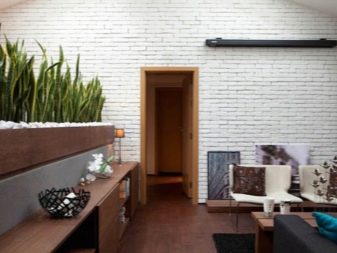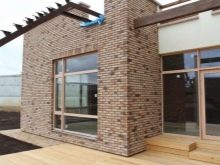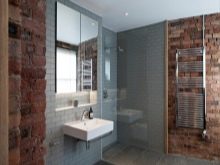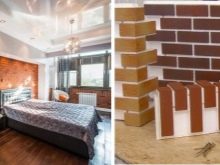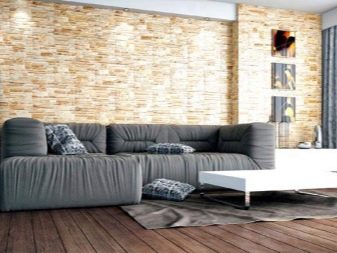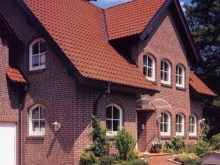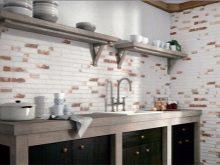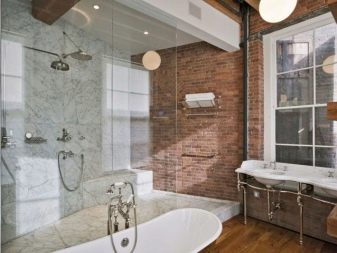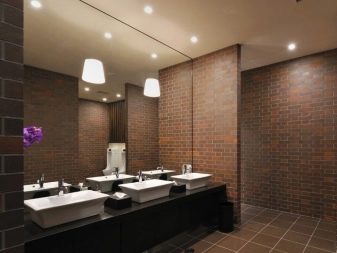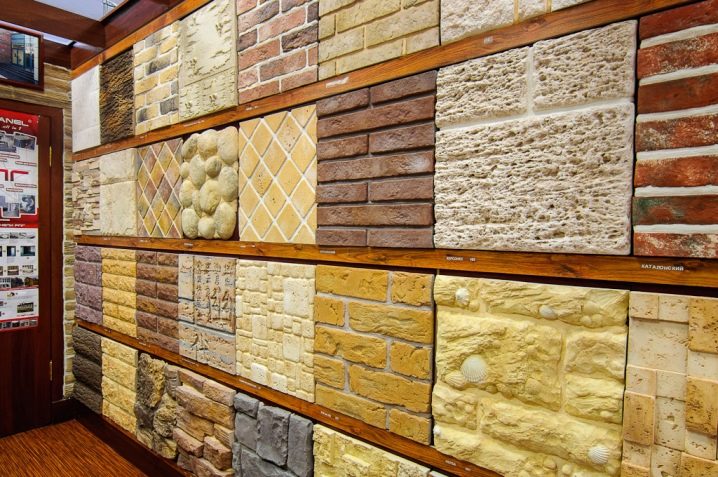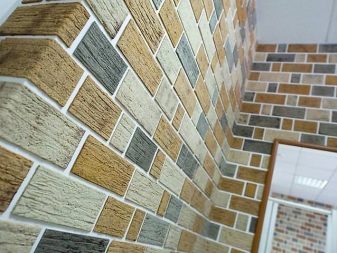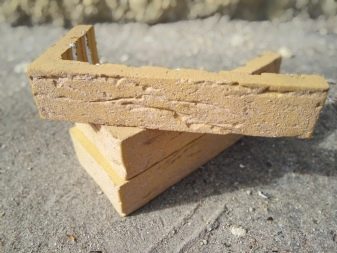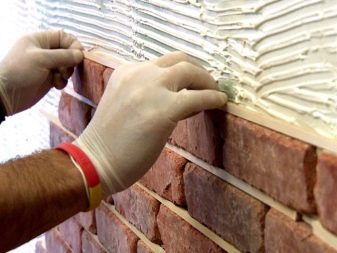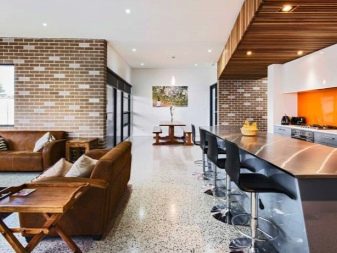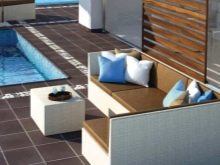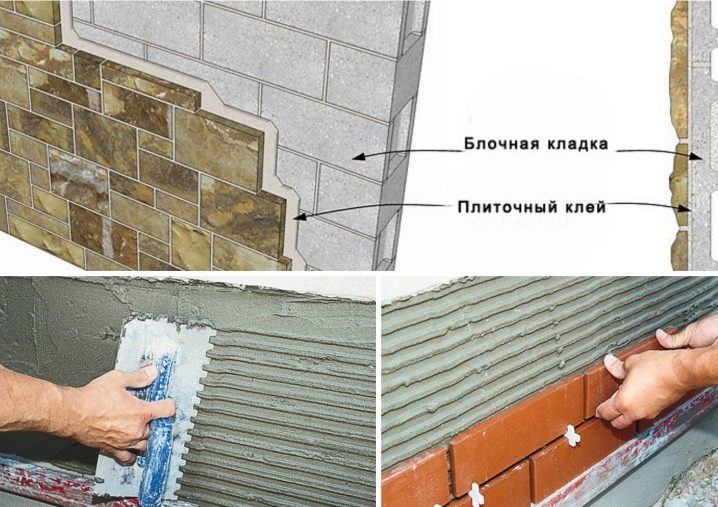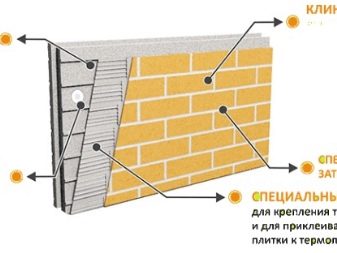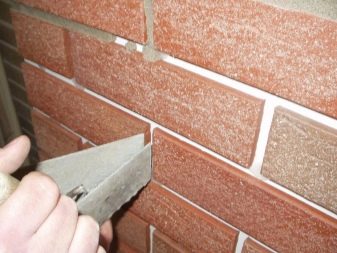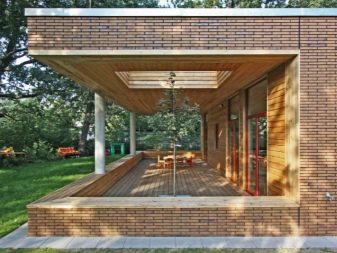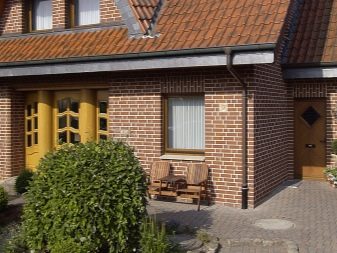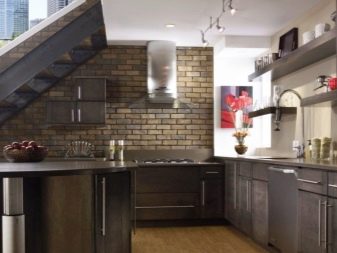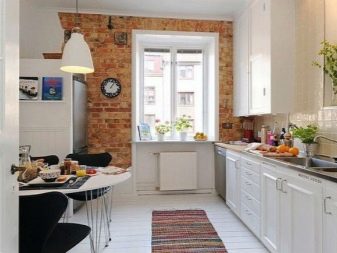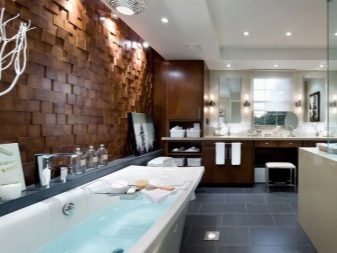Brick brick tile: features and scope of application
The walls in the interior of the office or apartment, finished with brick, are very popular. You can decorate them in this style today at the stage of finishing the room, regardless of what material the foundation was originally built from. Work can be done with the help of clinker tiles under the brick, which is used for interior design, and not just for the facades. The material itself has many advantages, which will be discussed below.
Material Features
This finishing material has several positive qualities. It is different:
- strength;
- frost resistance;
- low water absorption coefficient;
- wear resistance.
The popularity is added by the fact that white corner brick tiles for old bricks belong to environmentally friendly materials and can be used for interior decoration.It is made from natural raw materials, which is shale clay. According to its characteristics, it is similar to a conventional facing brick, but it has improved properties, since after production it is burned under the influence of high temperatures.
As a result, such a product is not afraid of shocks and other mechanical effects, which allows you to finish them with any bases in the interior or exterior, regardless of what size they have. The clinker tile is resistant to ultraviolet and does not fade in the sun, and is also not affected by climatic conditions and other factors, does not ignite when heated and does not emit substances harmful to humans or the nature of the air.
Due to the dense structure of this material does not absorb water, it does not appear mold or fungi, which is important when decorating rooms with high humidity.
If dust or dirt gets on the surface of the tile, it is easily washed off with ordinary water.
According to experts who have been working with this material for many years, it has almost no flaws except for the high cost of the tile. But this minus can be considered insignificantsince clinker can last for years and does not require repair, and the material itself will retain its characteristics throughout the entire service life, which can be 15 years or more.
Range
Clinker on the market in a large assortment. The facing tile can have various shades - from brown to white. The red color of the tile is best suited for interior decoration when it is necessary to imitate a wall under a natural brick. Also, tiles are made in the form of:
- square;
- hexagon;
- rectangle.
It differs in the texture of the coating, and therefore may be:
- smooth;
- rough;
- glazed.
A special feature is the fact that today clinker tiles are made as separate elements for finishing corners - this, in turn, allows us to speed up and simplify laying in these places, as well as to create a more attractive appearance of the finished surface. With this material, you can replace the decoration of the walls with ordinary brick in places where it is technically impossible.
Application
The thickness of wall tiles allows it to be used on various surfaces, including wooden and plasterboard.Before starting the installation, it is recommended to make the foundation in the form of a batten and fix it on the wall with self-tapping screws, and no additional work will be required.
In order to better fix the tile on the surface, special grooves are made on the inside, which are filled with cement and securely fix the product on the wall. With this device you can easily make the interior in a different style, update it, warm the room, and also use it as an aesthetic decoration.
Such material does not require frequent repairs and special maintenance when used, so the material is quite popular and in demand.
The tile can be used for various purposes.
- Technical. At production in the manufacture of tiles, no dyes are added to their composition, and such specimens are used for finishing laboratories or production premises. The main criterion for such a tile is its resistance to chemical attack, as well as strength. Therefore, tiles can be with increased wall thickness.
- For interior decoration. Perfectly fit into any interior and will not require any prior preparation. The model range is presented by different variations of a tile on color and structure.
- For use in rooms with high humidity. They are used in swimming pools, saunas or in other rooms where there are temperature drops and high humidity.
- For insulation. To use this material as a heater, it is dried after molding, and then burned. Therefore, this tile can be used for insulation of rooms without the use of additional types of insulation.
- According to individual parameters. You can order tiles in accordance with their parameters and criteria for the implementation of unique solutions.
Dimensions
The model range of this material has many different variations, which differ not only in shape and color, but also in size, which in some cases makes it difficult for an inexperienced user to choose. The length of such tiles can be from 210 to 240 mm, and width - from 50 to 113 mm.
Piling
Facing the surface of this material is carried out similarly to that used for the masonry of facade bricks. The material is attached to the base with a special glue, to which various dyes or plasticizers can be added to improve the properties.For the treatment of joints applied grouting, and the base requires additional preparation for the work.
Preparation basics. The brick tile under the made old brick is mounted only on the prepared walls. They should not be smooth in order to better hold the weight of the product.
Also on the walls should not be bumps or cracks.
With the help of a cord, markings are made on the wall, on which a separate tile will be laid. Regardless of how carefully the markings are made and the surface prepared, it will be necessary to trim some elements of the tile during laying. For this purpose, special devices of mechanical type are used.
All work must be done in rooms with room temperature. If these works will be carried out on the street, then there must be cool weather so that the tile does not absorb all the moisture from the wall from the solution.
Wall covering
A mixture with a thickness of up to 1 cm is applied to the surface of the wall. The solution is then spread over the surface with a spatula. The tile is installed horizontally in rows. Limiters are mounted between individual plates to maintain distance.After a certain time, these stops are removed, and the seams are sealed with mortar.
Grout
After the tile is dry it is necessary to rub the seams. To do this, dilute the appropriate composition in water according to the instructions for use. The grout is made with a rubber spatula.
Also in the process of removing dirt from the surface of the tile.
After such work, the surface is not afraid of moisture, it will not be eroded under the influence of negative external factors. If it is necessary to perform finishing work with this material in rooms, then the corners can be decorated with various elements or treated with technical silicone.
Experts note that the clinker tile does not always fit into the interior, since the special texture, styling and shades make the use of this material individual. Even if you choose the right tile in accordance with the style of the overall interior, the clinker will still stand out against their background, indicating their style.
A special feature is the fact that when using such a material it does not create pronounced vertical and horizontal lines, but it makes it possible to structure the surface,and therefore it is important to consider when choosing such products.
Fully clinker rooms need only those that have a large area. If you decorate a small room, it will become even less visually.
It is also important to choose the size of the tile itself for use in certain places.
Some samples can also be used to finish the kitchen or bathroom. It is possible to choose tiles of the same color for finishing surfaces or to combine among themselves various color schemes.
In the video below you will find a master class on the installation of clinker tiles on the facade.

